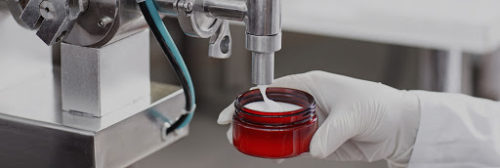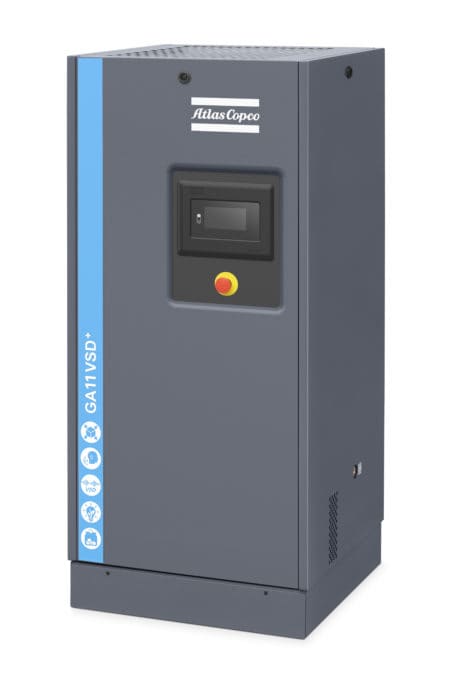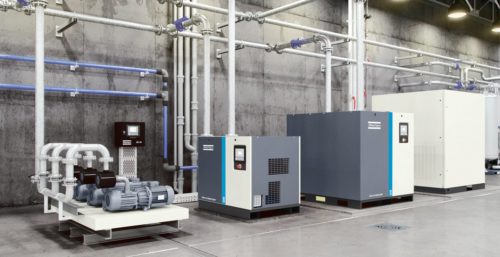Table of Contents
Click to View Section
News, Events and Happenings
Letter from the President
Hello Everyone,
This past year delivered as many reasons to move on from one year than any in recent memory. Yet, what we will choose to focus on and what we want to shine the light on, are the remarkable stories of sacrifice, resiliency, perseverance and courage to continue on.
We witnessed these examples of high character from our employees, customers and vendors. We read and witnessed it in the examples set by our first responders, nurses and doctors. This will be what we take with us today, tomorrow and into next year.
We give thanks to all these heroes, some we know and most we don’t, who faced uncertainty and kept showing up, no matter what. Often, sacrificing themselves to serve others. They led by example and their actions of courage should give all of us strength to carry on.
From everyone at Airmatic Compressor, we wish you and your family health and happiness. To our customers, thank you for giving us the honor of being your compressed air solutions provider. And to those who have yet to do business with us, we look forward to the opportunity to show you why more customers are choosing Airmatic Compressor.
Best Regards,
William N. Vowteras
President & CEO
Airmatic Compressor Systems, Inc.
New Hire
 We would like to announce the hire of our new Service Admin Coordinator, Lataya Rogers. Lataya graduated from William Paterson University with a B.A of Arts and she has worked the past eight years as a teacher within the Paterson Public School system. Lataya is excited to learn something new and help push our overall vision forward. Her main responsibilities will be supporting our service coordinators and relieving them of “most” of their administration related task which in return gives the coordinators the ability to support our clients quickly and efficiently. We are very excited for her to join our team.
We would like to announce the hire of our new Service Admin Coordinator, Lataya Rogers. Lataya graduated from William Paterson University with a B.A of Arts and she has worked the past eight years as a teacher within the Paterson Public School system. Lataya is excited to learn something new and help push our overall vision forward. Her main responsibilities will be supporting our service coordinators and relieving them of “most” of their administration related task which in return gives the coordinators the ability to support our clients quickly and efficiently. We are very excited for her to join our team.
Vendor Spotlight
Raising the Bar on Low Cost, High Value Technology
 One part of Atlas Copco’s claim to fame is by increasing compressor performance, efficiency, and controllability with the integration of new technology into a mature industry’s products. This revitalization helps keeps Atlas Copco the market leader in global compressed air technology.
One part of Atlas Copco’s claim to fame is by increasing compressor performance, efficiency, and controllability with the integration of new technology into a mature industry’s products. This revitalization helps keeps Atlas Copco the market leader in global compressed air technology.
Later this month, Atlas Copco will be launching their new AIRkeeper App designed for the ‘G’ lubricated screw compressor range. Here’s what it will do:
- Real-time compressor control
- Real-time notifications and alerts
- Clear warnings and alarms
- Service indications
- Intuitive performance monitoring and stats
- Your go-to place for support and information
No other manufacturer offers such capabilities for this range of market competitive air compressors. Ask your Systems Specialist how this can benefit you and your organization.
Customer Success Stories
Can super clean and dry compressed air bring out your beauty? Sounds like an odd question, but the answer is yes!
David Van’t Slot, Systems Specialist
 Airmatic Compressor recently helped a NJ cosmetics manufacturing company greatly improve their compressed air quality. In fact, the air quality has improved from a +38-degree F dew-point to better than -40-degree dew point. In addition, Airmatic assisted with upgrading and maintaining their compressed air filters. The customer says that their quality team is ecstatic with this compressed air quality improvement and they will maintain better product quality through the production process; More importantly they hope to maintain their consistent quality for all the products delivered to their customers.
Airmatic Compressor recently helped a NJ cosmetics manufacturing company greatly improve their compressed air quality. In fact, the air quality has improved from a +38-degree F dew-point to better than -40-degree dew point. In addition, Airmatic assisted with upgrading and maintaining their compressed air filters. The customer says that their quality team is ecstatic with this compressed air quality improvement and they will maintain better product quality through the production process; More importantly they hope to maintain their consistent quality for all the products delivered to their customers.
Better air quality equals less product rejections. In addition, the cleaner compressed air will help the production equipment last longer with less breakdowns. In the coming months Airmatic Compressor will be working with this globally recognized cosmetics manufacturer to further upgrade their compressed air system by installing Class ‘0’ (Zero) Oil-free air compressors, dryers and filters.
Just imagine what clean and dry compressed air could do for your production efficiency, quality and your bottom-line. It can be a win-win-win for you, your production costs and your customer.

Compressed Air Application Advice and Tools
Technical Project of the Month
To VSD or not to VSD…That is the Question
Larry Emmolo, Systems Specialist
In a recent application, a customer was facing the replacement of a 50HP VSD (Variable Speed Drive) compressor due to age. The air end was making noise indicating a potential catastrophic failure was likely to occur. The customer really needed to watch every penny spent and was looking for the most effective affordable solution available.
By examining the existing compressor’s operational range, it was determined that it primarily ran in a narrow band of 40-60% of its designed capacity. The real benefit of a compressor with an integral VSD is its ability to follow a wide variable demand curve, otherwise the additional cost for the VSD on the compressor is not offset by the ROI savings. This application is one where a fixed speed compressor would run at a minimal energy premium over the VSD, so the fixed speed is the best choice when comparing initial equipment costs, energy costs and maintenance over the long run.
An Atlas Cocpo GA26 fixed speed lubricated screw compressor was selected and purchased as the best immediate and long term solution.
Benefits of Data Logging
How to Save on Power Costs – The Power of Information
Rob Smith, Systems Specialist
 A manufacturing company had recently asked for our help in reducing the air compressors seemingly rising electrical power costs. The customer was operating three (3) 100-horsepower air compressors running for 2 shifts 5 days a week. In order to measure the power being used by the compressors, data loggers were installed on all 3 compressors with a pressure transducer installed downstream from the dryers.
A manufacturing company had recently asked for our help in reducing the air compressors seemingly rising electrical power costs. The customer was operating three (3) 100-horsepower air compressors running for 2 shifts 5 days a week. In order to measure the power being used by the compressors, data loggers were installed on all 3 compressors with a pressure transducer installed downstream from the dryers.
Once the critical operating and profile information was gathered, it was determined that the compressors were started at 5:00 AM by security, with actual production not starting until 7:00 AM. Two (2) hours per day of the air compressors running for no reason driving up electrical costs. Also, the compressors did not have the ability to turn off automatically once the plant pressure was satisfied. In addition, from the captured logging information, the customer would only need to run a 100-horsepower compressor to satisfy the facility’s air consumption much of the time with a second 100 horsepower turning on only intermittently. Having the older technology compressors and lack of control ability, a sequencer package was added with the ability of starting the compressors at a certain time and having the other compressors not running but ready to start if needed.
At the end of the day, thanks to the information provided through diligent testing, the customer was able to save thousands on power as well as upgrade the system to be more automated. Let us help you find savings in your compressed air system!
Tools of the Trade
“Rule of Thumb” for determining CFM from HP
Frank Asbaty, Systems Specialist
Have you ever wondered how much CFM your air compressor will produce, but the only information you have is the HP rating of the compressor? Don’t worry, we’v e got you covered.
e got you covered.
When it comes to using compressed air in your facility, you will want to know how much CFM you can expect from the discharge port of your compressor. This will help determine if that air compressor has sufficient compressed air flow to power your air tools or other air-consuming applications. To do that you need to know what CFM a particular device or tool will require to function within its design parameters. The device or tool will require a certain number of CFM at a specific air pressure, to work properly.
A rule of thumb (ROT) is that each 1 HP motor size generates about 3-5 CFM of compressed air flow at about 90 PSI, or HPx4= estimated CFM. To get more specific in estimating CFM based on the compressor technology: For reciprocating piston, rule of thumb is 3.5 CFM/HP, lubricated screw is 4.5 CFM/HP.
When you have sized all of your applications and totaled up all of the air you’re going to need now and for any future plant or air demand increases, and you are out searching for the right air compressor, you would divide the number of CFM per above ROT and that will give you an idea of the horsepower rating of the compressor required.
Not all compressor manufacturer’s rate their compressor output the same way. You might see a compressor showing a discharge rate at what appears to be an acceptable CFM, but on closer inspection, find that the figure is predicated on a much lower pressure than you might need. Discharge rates in CFM at higher pressures are always quite a bit lower than discharge rates at lower pressures, for that same compressor. Ensure that the unit you select will give you both the CFM you need, and the pressure your equipment demands to work properly for you.
The bottom line: there are multiple factors that determine how much CFM your compressor will produce within a certain HP rating, but using common ROT’s you get close enough in most cases.
Customer Service Department
Airmatic Compressor Systems Customer Service
 Jason Rogers, Director of Customer Service
Jason Rogers, Director of Customer Service
Airmatic cannot exist without a solid relationship with our customers who deserve and expect a service consisting of speed, accuracy, empathy, consistency and competitive pricing. Our goal is to provide an excellent customer service experience from start to finish, and it all begins with our internal service coordinators.
In knowing this, Airmatic is committed to the following six steps of training:
- We cross train all service coordinators.
- We teach the service coordinators the same language: The customer comes first
- We practice and keep on practicing until our service coordinators are confident with their task
- We provide training that focuses on their individual attitude, positivity and empathy.
- We provide personalize and one on one training.
- We provide continuous training. Training for us is never-ending.
“Building a good customer experience does not happen by accident. It happens by design.” – Clare Muscutt
Service Event of the Month
 Proper long-term storage of your air compressor is vital to it be a reliable asset in the future!
Proper long-term storage of your air compressor is vital to it be a reliable asset in the future!
William De Luca, Director of Technical Services
With a changing marketplace upon us, many businesses might be experiencing production variances, relocations, or new equipment purchases etc. that would have an impact on their current utility equipment, and its efficient purpose in the system or process.
In some instances, taking equipment offline for an extended period of time may be a result, and it is important to always properly store these items so that their integrity is preserved, and it can be a reliable asset to utilize in the future. If an organization is looking to take their air compressor offline for a period of time, it is no different, and it must be given proper attention the same way you would to any other key piece of equipment in your process.
The first step in properly storing any piece of equipment is always to refer to the manufacture’s long-term storage instructions for that particular model machine. Air compressors come in a variety of technology types and sizes, so it is for sure not a “one size fits all” situation. You would not want to overlook any key items, or just as important, apply any steps that are not appropriate and cause damage to the machine etc.
The following are some items to consider when storing your oil-lubricated compressor for an extended period of time, but always refer to the manufacture’s recommendations and procedures for your particular machine.
- Run the unit for approximately half an hour, activating the load and unload mechanism a few times
- Stop the unit, close the air outlet valve, and open all condensate drains
- If water-cooled, close the cooling water supply and drain the cooling water from the unit
- Disconnect the cooling water inlet and outlet and blow the circuit through with warm compressed air
- Disconnect the electrical service mains and make sure that voltage cannot be supplied accidentally
- Disassemble the moisture traps and make sure that the inside of the trap is dry, and close all the drains
- Place active silica gel bags, or some VCI (Vapor Corrosion Inhibitor) paper inside the trap and reinstall the cover
- Place silica gel bags or pleated VCI paper inside the air inlet orifice and seal off opening with adhesive tape
- Belt-driven units: slack off the belt tension, and put VCI paper between the belt and each of its pulleys
- Enclose instruments such as pressure and temperature switches in VCI paper, securing it with adhesive tape
- Place some active silica gel bags or accordion pleated VCI paper inside the electrical cubicle and close the door
- Attach VCI paper to the outside of the inlet and discharge air paths on the motor
- Stick sheets of VCI paper with adhesive tape onto the bodywork to close off all air inlet and outlet gratings
- Place some active silica gel bags or accordion pleated VCI paper inside the bodywork and close the doors
- Open units without body work; cover in suitable enclosure (plastic bag/sheet) and hold in place with adhesive tape
- Label the unit as being prepared for storage; preservation date, locations and qty of VCI paper and silica gel bags
- Unit transporting; reinstall protection devices securing components to the frame, immobilizing vibration dampers
- Store the unit indoors, in a dry, clean, ventilated space where the temperature fluctuations are as small as possible
- Every 2-weeks: inspect unit/element, rotate the motor/compressor element shaft
- Every 3-months: drain some oil, remove unloading valve and add some fresh oil of the same type, never mix oils
- Once a year: renew silica gel bags and VCI paper
Much of the general intent for proper long-term storage is moisture control and corrosion prevention, and the better this is addressed, the better the outcome results will be.
After Market at its Best
Documenting Preventative Maintenance
Craig Verga, Director of Aftermarket
Equipment reliability is crucial in the industrial workplace. Therefore, documenting preventative maintenance activities is a best practice which many companies take very seriously. There are several ways this can be accomplished. Some companies have computerized maintenance management systems (CMMS), which dictate the tasks and frequency of maintenance work. Other companies rely on their vendors to maintain electronic service records. Regardless of which approach you take, maintaining these records has a couple of key advantages:
- Equipment warranties are typically linked to ongoing maintenance activities over the duration of the warranty period. So, having proof that maintenance was performed is important should there be a failure that should be covered by the warranty.
- Regulatory bodies such as the FDA, OSHA, and the EPA may require proof that equipment upkeep is taking place. This reduces owner liability in the long run.
Airmatic Compressor works with our clients to make sure that their maintenance activities and records are always up to date. This allows you to meet the needs of your business by lowering the risk of unexpected problems and keeping your production process optimal at all times.
Vacuum Systems
Industrial Vacuum Systems- A “Throw-Away” Culture?
 Jeremy Garfield, Director – Vacuum Solutions
Jeremy Garfield, Director – Vacuum Solutions
Domestic manufacturing facilities are under continuous pressure to increase productivity and efficiency while decreasing the cost of operation. Plant management have become experts at buying third-party electricity and natural gas to reduce the unit cost of delivered utilities, and have taken part in repeated energy audit programs to ensure self-generated utilities are operating at peak efficiency while ensure long equipment life.
So why are facilities still throwing out vacuum pumps every five years, and keeping replacements on the shelf?
The answer to this cost-heavy practice is rooted in how many vacuum pumps get into manufacturing plants. Packaging equipment manufacturers often include small oil-sealed rotary vane vacuum pumps inside their OEM equipment, in locations hard to manage. These pumps go without maintenance until they fail, and require immediate change-out due to the criticality of their service.
Vacuum centralization strategies allow facilities to separate critical self-generated utilities like vacuum from the process areas of the plant. Centralization of a facilities vacuum system can result in:
- Increased system efficiency
- Simplified maintenance
- Installed back-up
- Longer equipment life
Generating utilities at the point of use is a messy, inefficient and expensive practice that is thankfully on the downturn with the advent of advanced and efficient vacuum equipment.
December Sales Specials
 For the month of December, Airmatic Compressor will be offering 10% off on select Atlas Copco fixed-speed GA range of rotary screw air compressors from 125 HP and under! Contact Airmatic Compressor today to take advantage of this special offer.
For the month of December, Airmatic Compressor will be offering 10% off on select Atlas Copco fixed-speed GA range of rotary screw air compressors from 125 HP and under! Contact Airmatic Compressor today to take advantage of this special offer.
